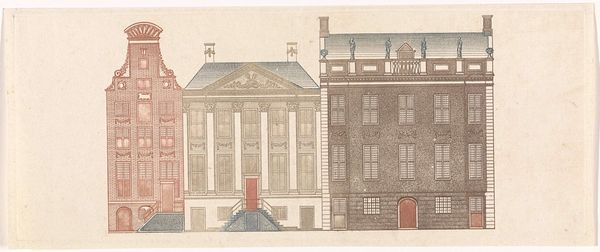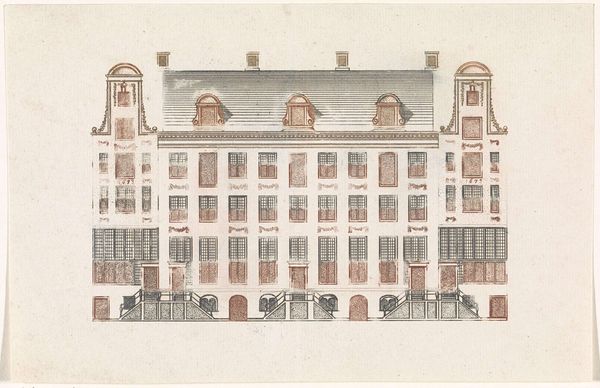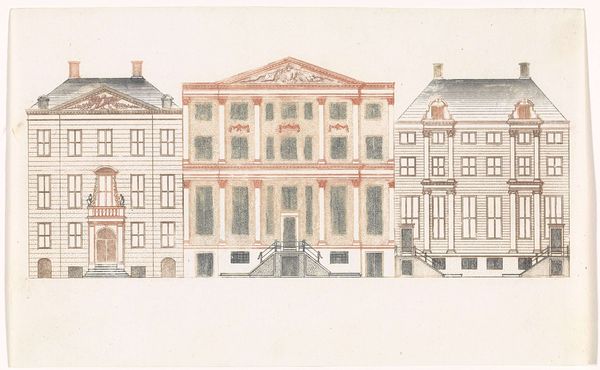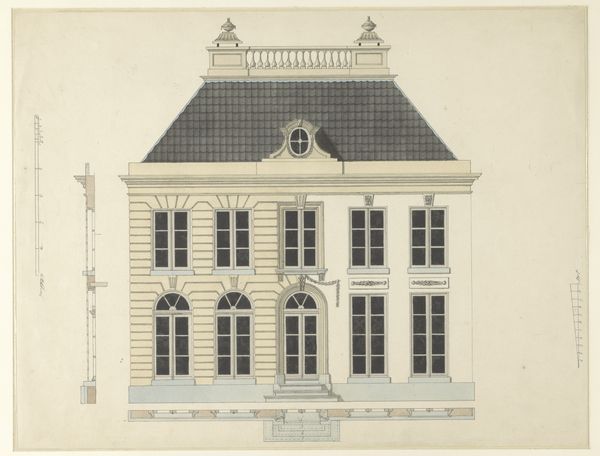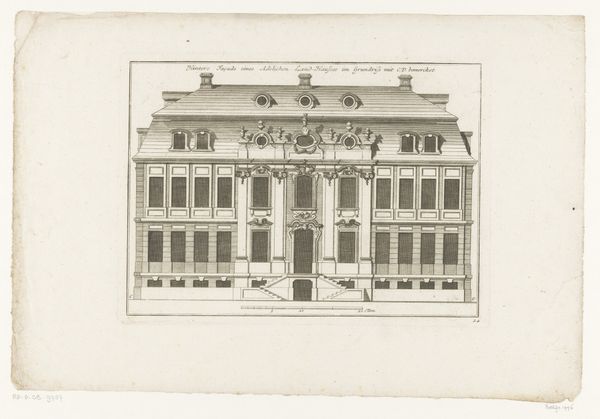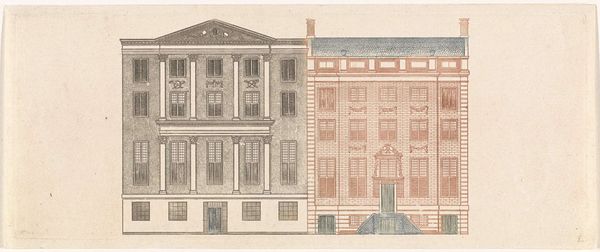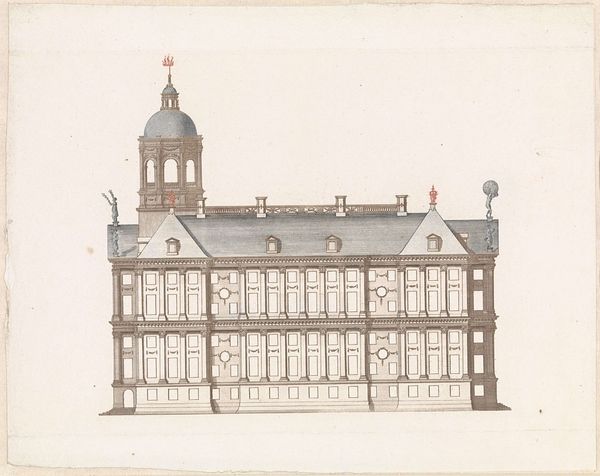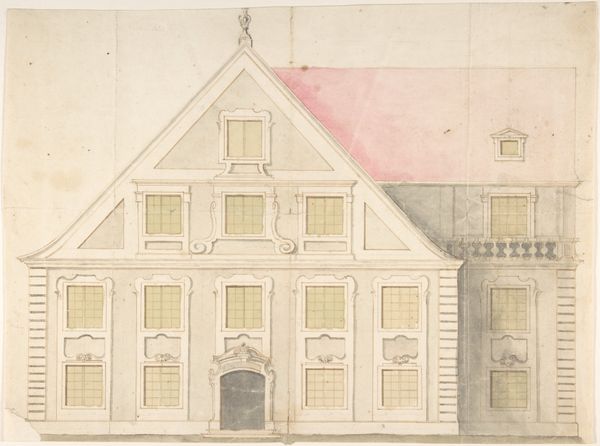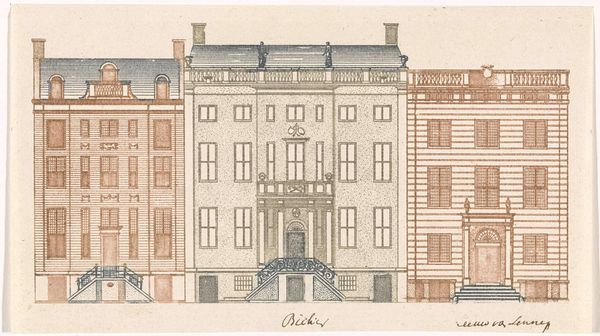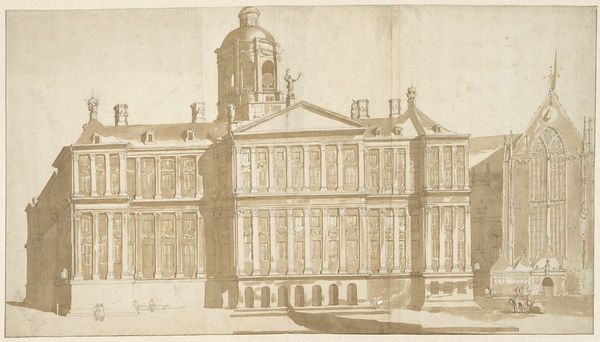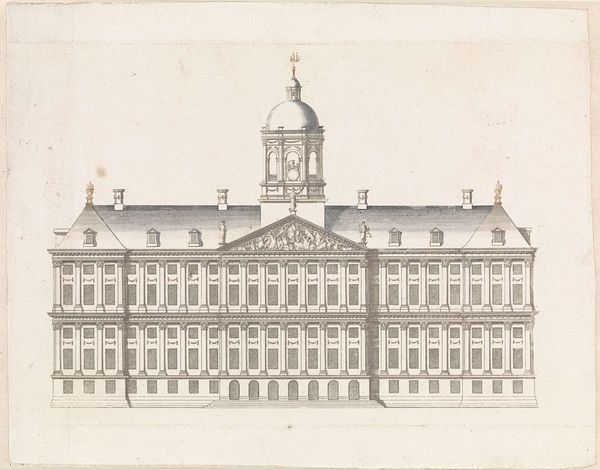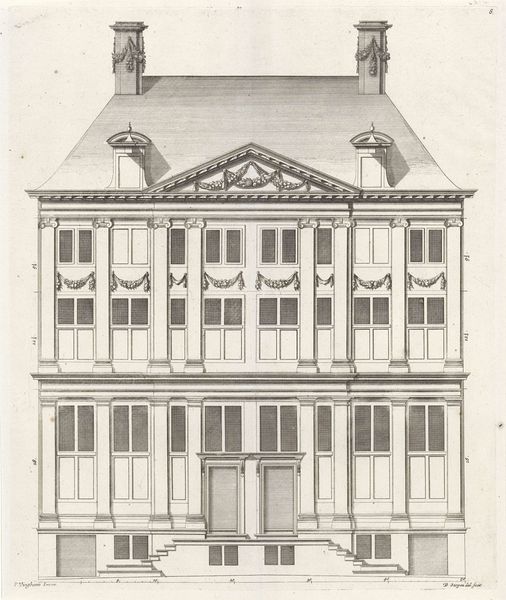
drawing, paper, ink, architecture
#
drawing
#
dutch-golden-age
#
paper
#
ink
#
cityscape
#
watercolour illustration
#
watercolor
#
architecture
Dimensions: height 108 mm, width 261 mm
Copyright: Rijks Museum: Open Domain
Editor: Here we have an ink drawing on paper, “Amsterdamse grachtenhuizen aan de Herengracht 471-477,” created between 1696 and 1706. What immediately strikes me is the sheer order and precision. What can you tell me about it? Curator: That order reflects the social order of the time. This cityscape isn't just a pretty picture; it's a document of power, of mercantile elites asserting their dominance through architecture. These canal houses represent not just wealth, but the systematic accumulation of it, tied to colonial trade and exploitation. Notice how the central building is visually emphasized? What might that suggest about the owner's status, relative to the neighbors? Editor: It suggests greater importance, a kind of social hierarchy, almost like the buildings are posing for a class picture. So, it's not just about architecture; it's about social commentary? Curator: Exactly. Look at the repetition of windows, the careful symmetry. It speaks to control, not just over the land and resources to build these structures, but also over the lives connected to that wealth. How does the lack of people affect your reading of this image? Does it amplify the feeling of constructed space? Editor: It makes the scene feel strangely sterile. It highlights the artifice. Are those subtle colour variations deliberate to break from total uniformity, or simply the effect of time? Curator: It's possible they were intentional to introduce subtle nuances within the established order. Remember, even within systems of power, there's room for individual expression, for asserting one's identity. The Dutch Golden Age was a time of innovation, but its economic success was built upon deep social inequalities. Editor: So, the drawing becomes a lens through which we can examine both the splendor and the inherent contradictions of the era. Curator: Precisely. It encourages us to question what stories architecture silently tells about identity, power, and history.
Comments
No comments
Be the first to comment and join the conversation on the ultimate creative platform.
